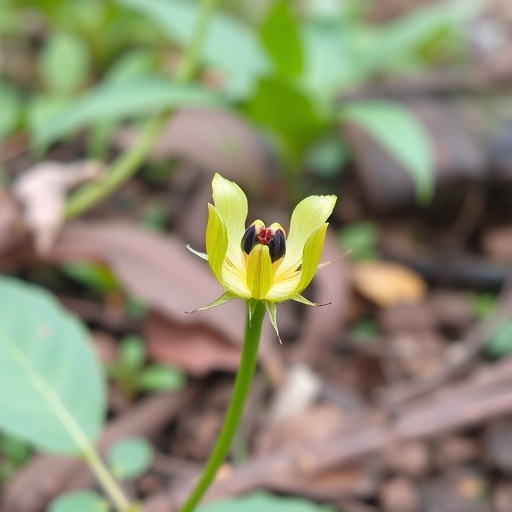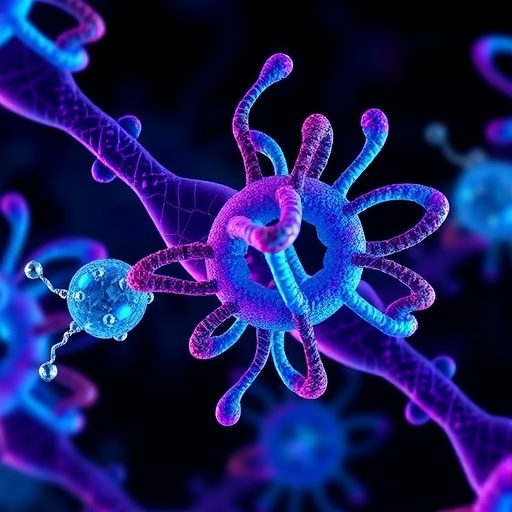PROTECT YOUR DNA WITH QUANTUM TECHNOLOGY
Orgo-Life the new way to the future Advertising by Adpathway
In the high-stakes environment of neonatal intensive care units (NICUs), the management of cardiovascular instability remains a persistent and complex challenge. Dopamine has long stood as a mainstay in the armamentarium against neonatal hypotension, frequently employed as a first-line vasoactive agent to increase blood pressure and augment perfusion in fragile newborns. Yet, as neonatal physiology and pharmacology continue to evolve in scientific understanding, so too does the scrutiny of dopamine’s multifaceted hemodynamic effects—raising critical questions about its role and prompting a reevaluation of treatment paradigms.
At the core of this discourse lies the intricate interplay between dopamine’s pharmacodynamics and the unique cardiovascular physiology of neonates. Dopamine acts primarily through dopaminergic, beta-adrenergic, and alpha-adrenergic receptors, effects that are dose-dependent yet notoriously variable in newborn patients. Its capacity to elevate systemic blood pressure has been proven, but emerging evidence suggests that this benefit may come at an unanticipated cost to pulmonary vascular resistance and myocardial function. This complexity underscores the need for cautious and physiology-guided use rather than a reflexive, one-size-fits-all approach.
Dopamine’s influence on pulmonary vascular resistance (PVR) demands particular attention. Neonatal pulmonary circulation is characteristically susceptible to vasoregulatory shifts, which can be exacerbated by certain vasoactive agents. While dopamine’s alpha-adrenergic stimulation can induce systemic vasoconstriction, it may simultaneously raise PVR—a consequence that threatens to perpetuate or worsen hypoxemia, especially in neonates with transitional or chronic pulmonary hypertension. The hemodynamic burden imposed by such changes potentially undermines the very goals of circulatory support that dopamine aims to fulfill.
Myocardial function in neonates presents another layer of complexity. The immature myocardium exhibits distinct contractile and metabolic properties, rendering it sensitive to alterations in afterload and inotropy. Dopamine’s beta-adrenergic stimulation theoretically supports myocardial contractility, yet clinical responses differ markedly. Some neonates demonstrate improved stroke volume and cardiac output, while others encounter increased myocardial oxygen demand and arrhythmogenic risk without proportional hemodynamic gains. This variability highlights the inadequacy of dopamine as a universal solution and calls for individualized assessment of myocardial performance during therapy.
The current discourse increasingly advocates for a physiology-based strategy in cardiovascular support. Rather than relying solely on dopamine as a default agent, clinicians are encouraged to consider the heterogeneous pathophysiological contexts underlying hypotension and circulatory failure in neonates. For example, infants with myocardial dysfunction may benefit more from inotropes with proven direct cardiac effects, whereas those with vasoplegia or impaired vascular tone might require selective vasoconstrictors or vasodilators tailored to their vascular bed abnormalities.
Parallel to this conceptual framework, the spectrum of alternative vasoactive agents has gained prominence. Agents such as dobutamine, milrinone, epinephrine, and norepinephrine each possess unique receptor profiles and mechanisms of action that may offer distinct advantages depending on clinical context. Dobutamine’s preferential beta-adrenergic action may improve cardiac output with less impact on PVR; milrinone’s phosphodiesterase inhibition imparts combined inotropic and pulmonary vasodilatory effects; epinephrine delivers potent inotropy and vasoconstriction but with complexities related to metabolic effects; norepinephrine offers targeted alpha-adrenergic mediated systemic vasoconstriction without notable inotropic activity. The challenge lies in judiciously matching these agents to specific neonatal cardiovascular phenotypes.
Importantly, the transition from dopamine-centric therapy to a nuanced, physiology-guided approach requires meticulous hemodynamic monitoring and understanding of neonatal cardiovascular pathophysiology. Advanced modalities, including echocardiography, near-infrared spectroscopy, and invasive arterial monitoring, equip clinicians with real-time data on cardiac output, vascular resistance, and oxygen delivery, allowing for dynamic titration of vasoactive drugs. This individualized management aligns with precision medicine principles and strives to optimize outcomes by minimizing adverse effects and maximizing therapeutic efficacy.
The implications of rethinking dopamine’s primacy extend beyond individual patient care. The historical reliance on dopamine may have obscured subtler determinants of neonatal cardiovascular compromise, leading to therapeutic inertia in face of complex pathologies. Embracing a broader pharmacopeia and refined assessment tools challenges the NICU community to refine existing protocols and generate robust evidence to guide agent selection, dosing strategies, and weaning practices—a venture that will require concerted clinical trials and translational research.
Further complicating the clinical landscape are developmental pharmacokinetics and pharmacodynamics unique to neonates. Immature organ systems, variable receptor expression, and altered drug metabolism affect both the efficacy and safety margins of vasoactive agents. Dopamine’s clearance and receptor responsiveness evolve rapidly postnatally, creating additional variability in therapeutic responses and risks. This intrinsic heterogeneity mandates a tailored approach ensuring that pharmacologic interventions harmonize with ongoing maturation processes.
In this context, the risks associated with dopamine use—ranging from tachyarrhythmias, immune modulation, to metabolic disturbances—add urgency to reconsideration efforts. Neonatal cardiovascular support demands not only efficacy in raising blood pressure but also preservation of tissue perfusion and avoidance of iatrogenic injury. Balancing these goals against dopamine’s multifactorial impacts demands vigilant clinical judgment and may constrain dopamine’s role to selected scenarios rather than blanket first-line status.
The scientific community’s call to action is clear: optimizing neonatal hemodynamic management requires redefining dopamine’s role within a comprehensive therapeutic algorithm that embraces individual physiology and pathophysiology. This transformative perspective has the potential to improve morbidity and mortality outcomes by minimizing unintended hemodynamic perturbations and fostering more precise cardiovascular support.
Looking ahead, integration of systems biology, computational modeling, and artificial intelligence may enhance predictive capabilities regarding neonatal cardiovascular responses to vasoactive therapies. Precision dosing regimens could emerge from these advances, minimizing adverse effects while maximizing efficacy. The evolving landscape positions dopamine not as a discarded relic but as one tool within an increasingly sophisticated toolkit, deployed judiciously according to nuanced clinical scenarios.
In summary, while dopamine has earned its historical place as a cornerstone in neonatal cardiovascular therapy, the emerging evidence mandates a critical reappraisal of its role. Envisioning a future where vasoactive therapy is individualized, physiology-guided, and informed by advanced monitoring will revolutionize neonatal cardiovascular care, moving beyond dopamine monotherapy towards integrated, patient-specific strategies that safeguard the vulnerable newborn heart and circulation.
Ultimately, this paradigm shift embodies a broader clinical imperative: as our understanding of neonatal cardiovascular physiology deepens, so must our therapeutic sophistication evolve. The era of dopamine as an automatic first-line agent may be yielding to a new epoch—one defined by tailored interventions that reflect the complexity and individuality of each neonate’s hemodynamic needs.
Subject of Research: Physiology-guided vasoactive therapy and the re-evaluation of dopamine use in neonatal cardiovascular management.
Article Title: Physiology-guided vasoactive therapy in neonates: rethinking dopamine as first-line.
Article References:
Hébert, A., Lakshminrusimha, S., Rios, D.R. et al. Physiology-guided vasoactive therapy in neonates: rethinking dopamine as first-line.
J Perinatol (2025). https://doi.org/10.1038/s41372-025-02407-w
Image Credits: AI Generated
DOI: https://doi.org/10.1038/s41372-025-02407-w
Tags: cardiovascular instability in newbornsdopamine as neonatal therapydopamine pharmacodynamics in neonatesemerging evidence in neonatal therapieshemodynamic effects of dopamineindividualized treatment for neonatesneonatal cardiovascular physiologyneonatal hypotension managementneonatal intensive carepulmonary vascular resistance in infantsreevaluating dopamine use in newbornsvasoactive agents in NICUs


 3 hours ago
11
3 hours ago
11





















 English (US) ·
English (US) ·  French (CA) ·
French (CA) ·